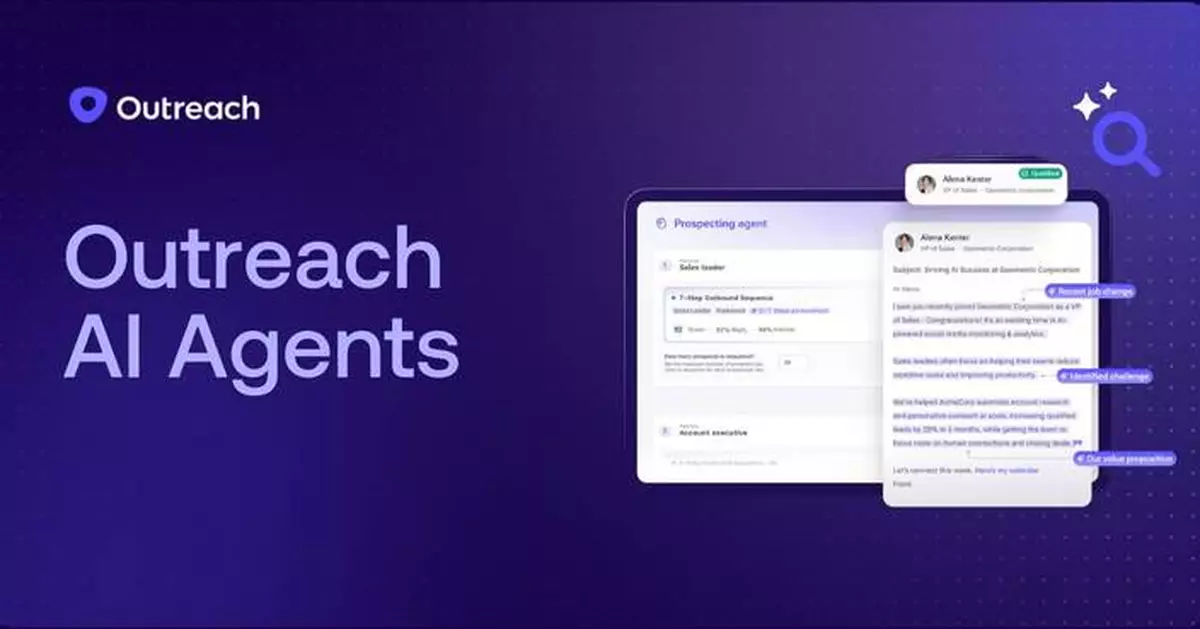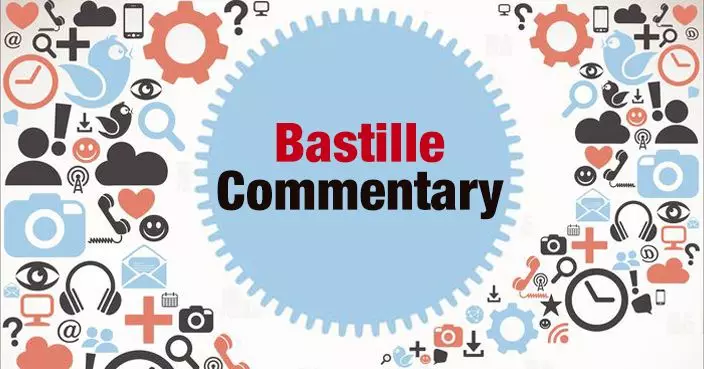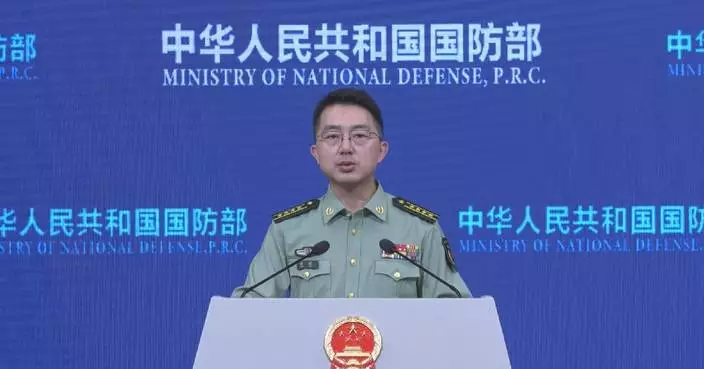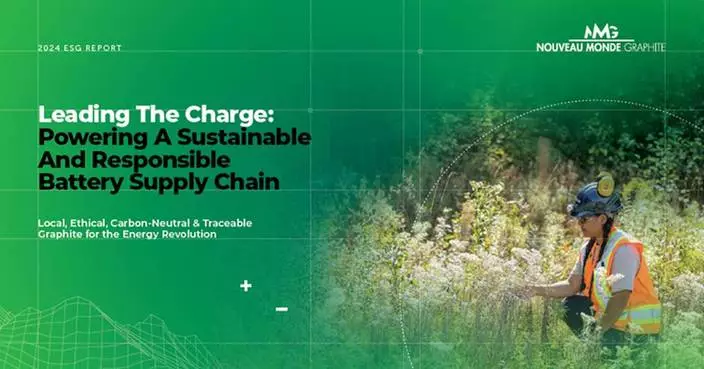SEATTLE--(BUSINESS WIRE)--Mar 26, 2025--
Outreach, the AI Sales Execution Platform built for intelligent revenue workflows, today announced Outreach AI Agents. The company’s first AI Agent, Outreach AI Prospecting Agent, is available for customers.
This press release features multimedia. View the full release here: https://www.businesswire.com/news/home/20250326834836/en/
“By 2028, Gartner® predicts that 33% of enterprise software applications will include agentic AI, up from less than 1% in 2024, with at least 15% of day-to-day work decisions being made autonomously through AI agents.”*
Outreach’s AI Agents are integrated directly into a seller's workflow to make it easy to use and increase seller productivity. Customers using Outreach’s AI Prospecting Agent have already seen up to 10x increase in productivity, allowing reps to spend more time on higher value tasks.
“Our sales team is always looking for ways to spend more time engaging with prospective customers and the Outreach AI Prospecting Agent will enable them to do just that,” said Melody Gilliam, Business Systems Manager at SevenRooms. “Implementing this agent aligns perfectly with our goal to embed AI across our customer journey to improve our business processes and drive revenue growth.”
Revenue teams will benefit from Outreach’s AI Agents across the entire sales cycle, from prospecting to deal closing to renewing and expanding. For example, Outreach’s AI Prospecting Agent enables reps to spend less time on mundane tasks such as researching prospects and accounts and generating personalized content.
“The buying landscape has evolved, making it more critical than ever to build a network of champions within every account,” said Nav Nicholson, Senior Manager, Revenue Enablement Operations at Cockroach Labs. “That’s why we’re excited to leverage Outreach’s AI Prospecting Agent — helping us secure conversations with the right stakeholders from the start. With the AI managing early outreach, our sellers can stay focused on engaging customers and driving strategic value.”
To further power Outreach’s AI Agents, Outreach is working with partners like Explorium and an ecosystem of data providers that integrate into its AI Agents.
“Our philosophy is that AI should handle the heavy lifting so sellers can shine everywhere AI can’t, and that’s what our AI Agents are here to do,” said Nithya Lakshmanan, Head of Product at Outreach. “By harnessing our exclusive customer engagement and revenue data on the Outreach platform and bringing in third-party data sources to link data throughout revenue workflows, our AI Agents supercharge selling to support deals at all stages in the sales cycle.”
Connect with your rep today to learn how your organization can enable Outreach’s AI Prospecting Agent. Learn more about Outreach’s AI Agents and register for Unleash 2025 to hear directly from Outreach AI Agent users.
*Gartner, Capitalize on the AI Agent Opportunity, Daniel Sun, February 27, 2025
GARTNER is a registered trademark and service mark of Gartner, Inc. and/or its affiliates in the U.S. and internationally and is used herein with permission. All rights reserved.
About Outreach
Outreach is the first and only AI Sales Execution Platform built for intelligent revenue workflows. Built on the world’s largest foundation of customer interactions and go-to-market team data, Outreach gives teams the tools they need to design, execute, and continuously improve a revenue strategy that is disciplined, achievable, and optimized for every stage of the customer journey. The world’s most effective revenue organizations, including Okta, SAP, Siemens, Snowflake, and Verizon use Outreach to power workflows, put customers at the center of their business, and win in the market. Outreach is a privately held company based in Seattle, Washington, with offices worldwide. To learn more, please visit www.outreach.io.
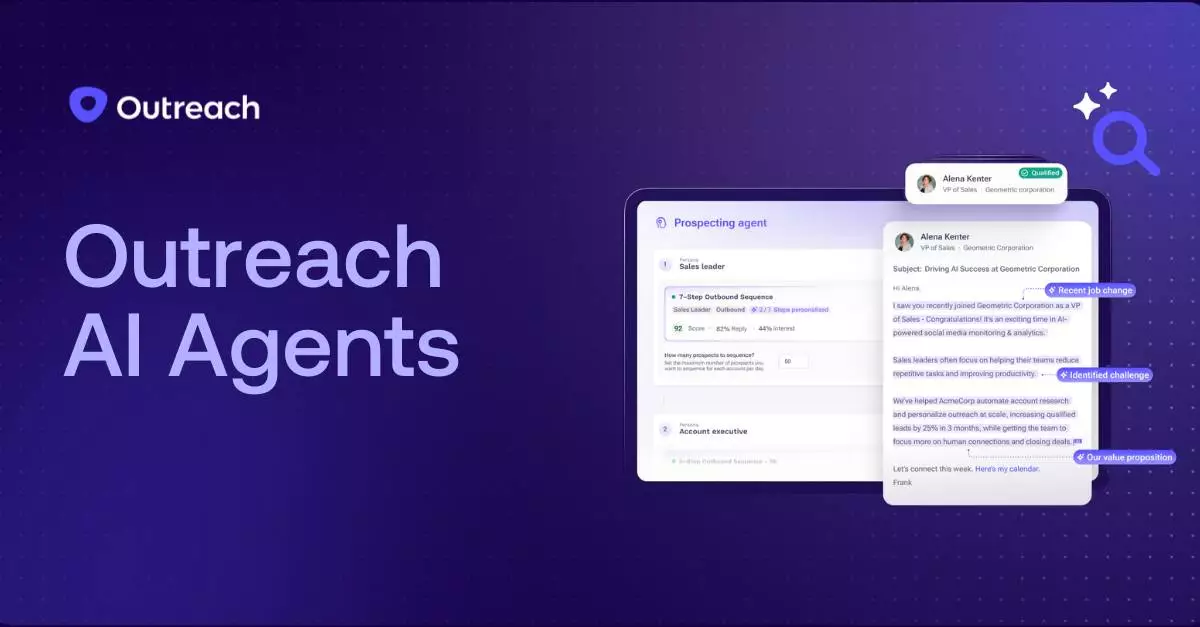

Outreach AI Agents will increase seller productivity
HWANGE, Zimbabwe (AP) — When GPS-triggered alerts show an elephant herd heading toward villages near Zimbabwe's Hwange National Park, Capon Sibanda springs into action. He posts warnings in WhatsApp groups before speeding off on his bicycle to inform nearby residents without phones or network access.
The new system of tracking elephants wearing GPS collars was launched last year by the Zimbabwe Parks and Wildlife Management Authority and the International Fund for Animal Welfare. It aims to prevent dangerous encounters between people and elephants, which are more frequent as climate change worsens competition for food and water.
“When we started it was more of a challenge, but it’s becoming phenomenal,” said Sibanda, 29, one of the local volunteers trained to be community guardians.
For generations, villagers banged pots, shouted or burned dung to drive away elephants. But worsening droughts and shrinking resources have pushed the animals to raid villages more often, destroying crops and infrastructure and sometimes injuring or killing people.
Zimbabwe's elephant population is estimated at around 100,000, nearly double the land’s capacity. The country hasn’t culled elephants in close to four decades. That's because of pressure from wildlife conservation activists, and because the process is expensive, according to parks spokesman Tinashe Farawo.
Conflicts between humans and wildlife such as elephants, lions and hyenas killed 18 people across the southern African country between January and April this year, forcing park authorities to kill 158 “trouble” animals during that period.
“Droughts are getting worse. The elephants devour the little that we harvest,” said Senzeni Sibanda, a local councilor and farmer, tending her tomato crop with cow dung manure in a community garden that also supports a school feeding program.
Technology now supports the traditional tactics. Through the EarthRanger platform introduced by IFAW, authorities track collared elephants in real time. Maps show their proximity to the buffer zone — delineated on digital maps, not by fences — that separate the park and hunting concessions from community land.
At a park restaurant one morning IFAW field operations manager Arnold Tshipa monitored moving icons on his laptop as he waited for breakfast. When an icon crossed a red line, signaling a breach, an alert pinged.
“We’re going to be able to see the interactions between wildlife and people,” Tshipa said. “This allows us to give more resources to particular areas."
The system also logs incidents like crop damage or attacks on people and livestock by predators such as lions or hyenas and retaliatory attacks on wildlife by humans. It also tracks the location of community guardians like Capon Sibanda.
“Every time I wake up, I take my bike, I take my gadget and hit the road,” Sibanda said. He collects and stores data on his phone, usually with photos. “Within a blink,” alerts go to rangers and villagers, he said.
His commitment has earned admiration from locals, who sometimes gift him crops or meat. He also receives a monthly food allotment worth about $80 along with internet data.
Parks agency director Edson Gandiwa said the platform ensures that “conservation decisions are informed by robust scientific data.”
Villagers like Senzeni Sibanda say the system is making a difference: “We still bang pans, but now we get warnings in time and rangers react more quickly.”
Still, frustration lingers. Sibanda has lost crops and water infrastructure to elephant raids and wants stronger action. “Why aren’t you culling them so that we benefit?” she asked. “We have too many elephants anyway.”
Her community, home to several hundred people, receives only a small share of annual trophy hunting revenues, roughly the value of one elephant or between $10,000 and $80,000, which goes toward water repairs or fencing. She wants a rise in Zimbabwe's hunting quota, which stands at 500 elephants per year, and her community's share increased.
The elephant debate has made headlines. In September last year, activists protested after Zimbabwe and Namibia proposed slaughtering elephants to feed drought-stricken communities. Botswana’s then-president offered to gift 20,000 elephants to Germany, and the country’s wildlife minister mock-suggested sending 10,000 to Hyde Park in the heart of London so Britons could “have a taste of living alongside elephants.”
Zimbabwe's collaring project may offer a way forward. Sixteen elephants, mostly matriarchs, have been fitted with GPS collars, allowing rangers to track entire herds by following their leaders. But Hwange holds about 45,000 elephants, and parks officials say it has capacity for 15,000. Project officials acknowledge a huge gap remains.
In a recent collaring mission, a team of ecologists, vets, trackers and rangers identified a herd. A marksman darted the matriarch from a distance. After some tracking using a drone and a truck, team members fitted the collar, whose battery lasts between two and four years. Some collected blood samples. Rangers with rifles kept watch.
Once the collar was secured, an antidote was administered, and the matriarch staggered off into the wild, flapping its ears.
“Every second counts,” said Kudzai Mapurisa, a parks agency veterinarian.
The Associated Press’ climate and environmental coverage receives financial support from multiple private foundations. AP is solely responsible for all content. Find AP’s standards for working with philanthropies, a list of supporters and funded coverage areas at AP.org.
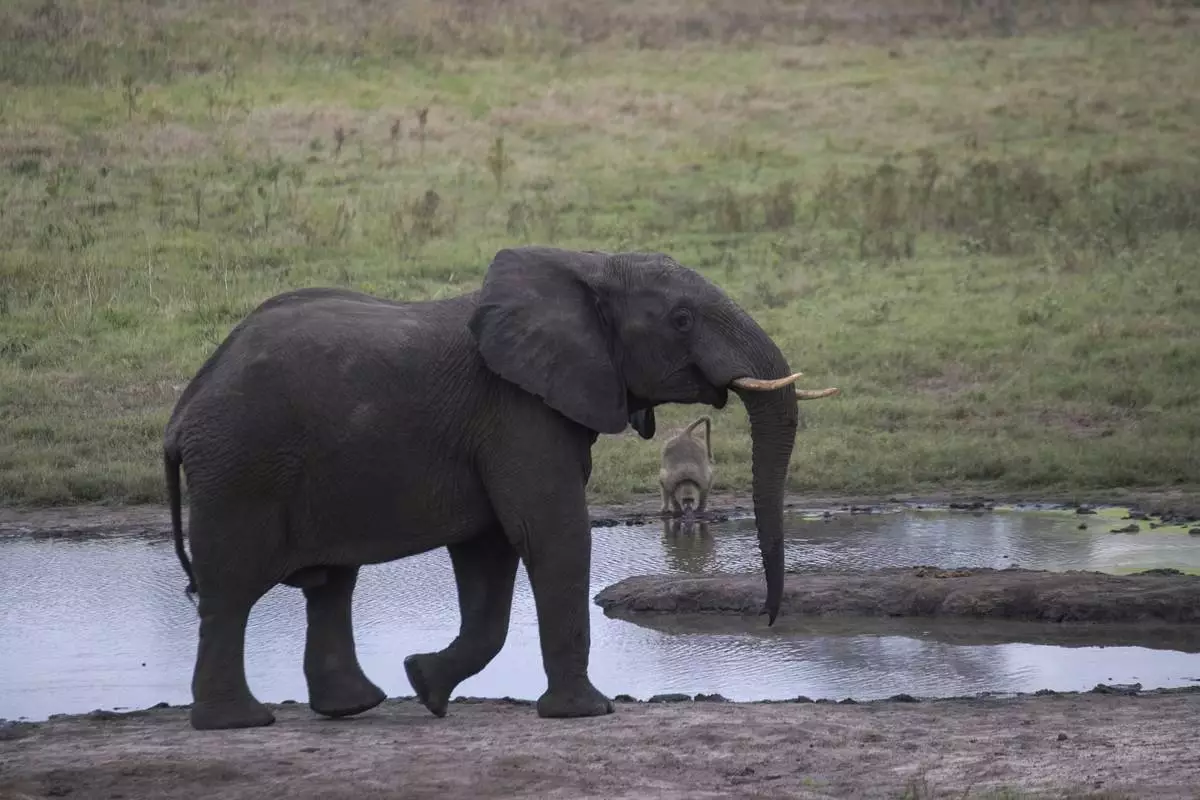
An elephant walks in the Hwange National Park, Zimbabwe, Monday, April 28 2025. (AP Photo/Aaron Ufumeli)
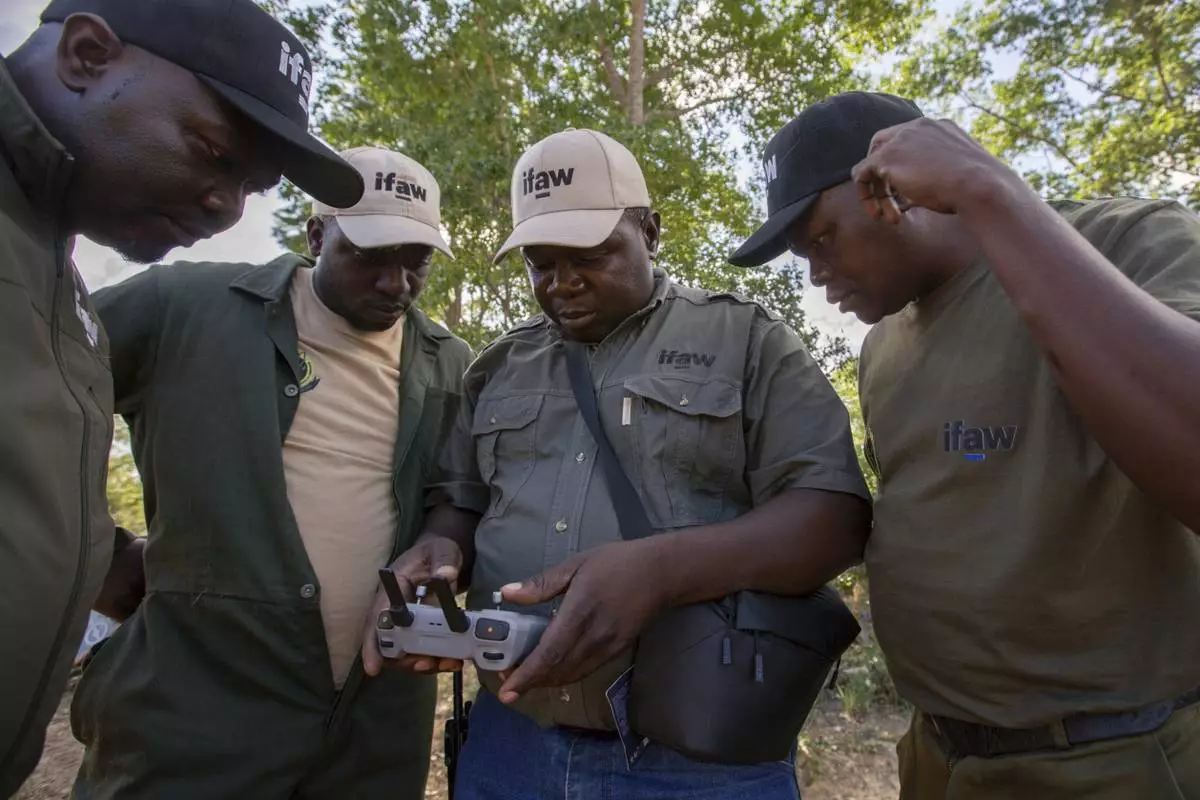
Zimbabwe Parks and Wildlife Management Authority and the International Fund for Animal Welfare officers monitor an elephant's movement using a drone in Zimbabwe’s Hwange National Park, Zimbabwe, Tuesday, April 29, 2025. (AP Photo/Aaron Ufumeli)
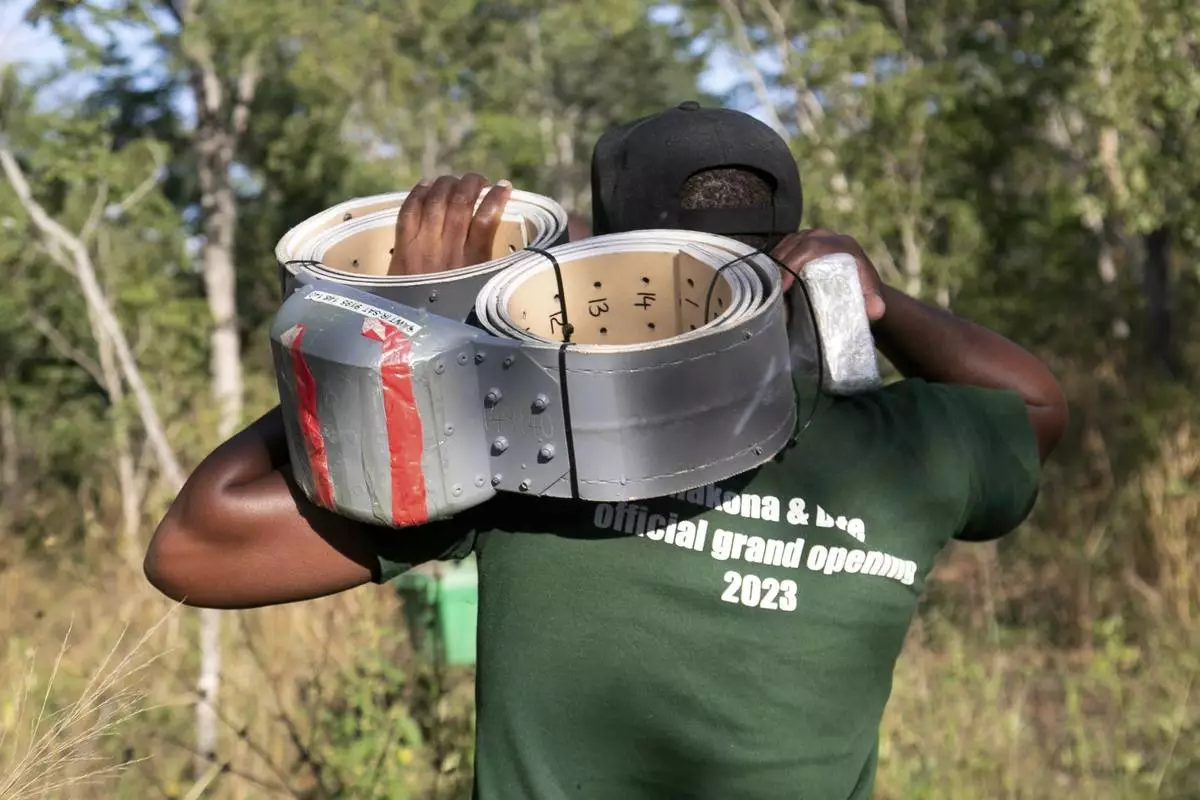
Zimbabwe Parks and Wildlife Management Authority officer carries a collar to be used to track an in elephant in the Hwange National Park, Zimbabwe, Tuesday, April 29 2025. (AP Photo/Aaron Ufumeli)
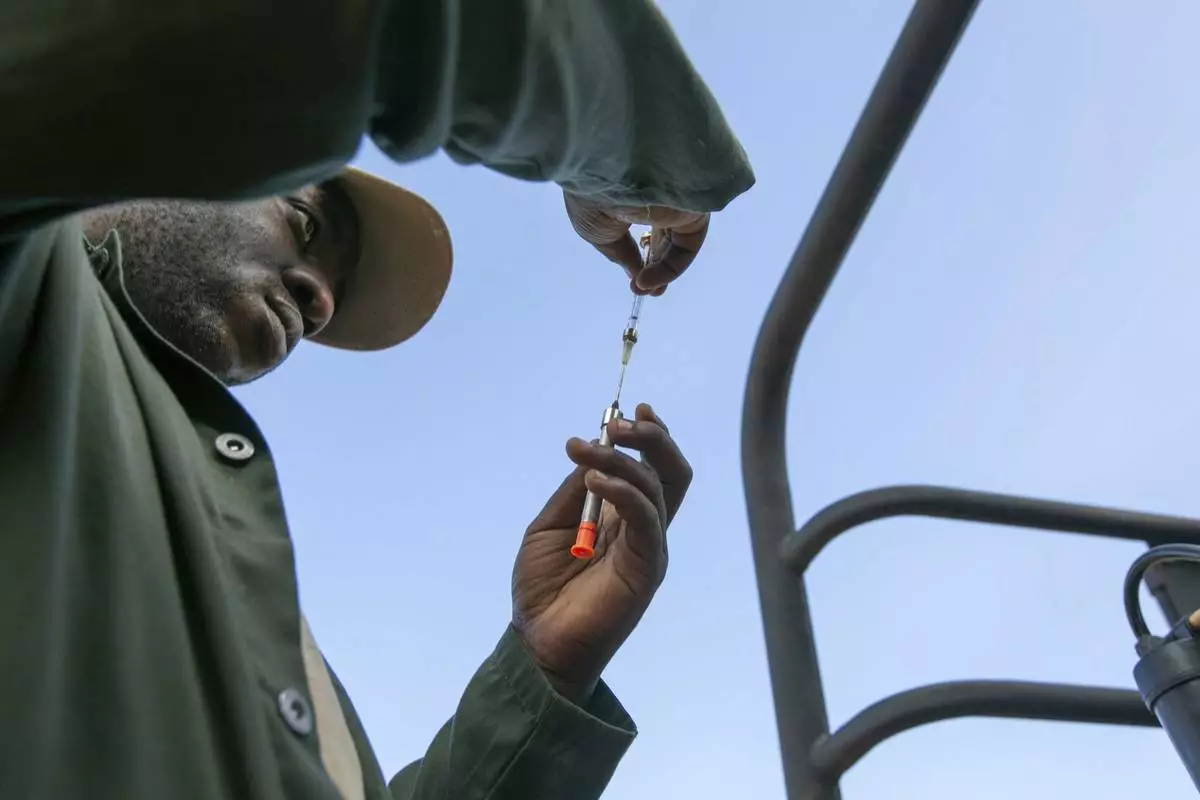
Kudzai Mapurisa, a Zimbabwe Parks and Wildlife Management Authority veterinarian, prepares to dart an elephant in Zimbabwe’s Hwange National Park, Tuesday, April 29, 2025. (AP Photo/Aaron Ufumeli)
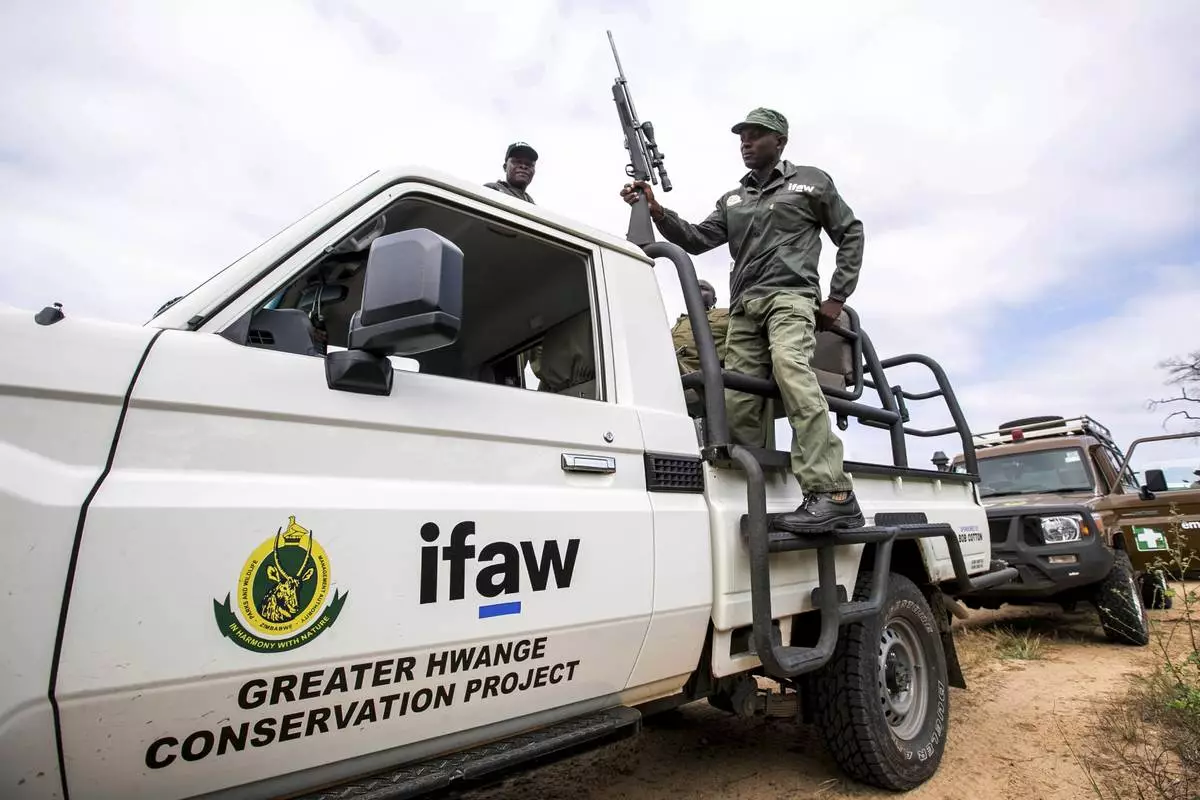
A Zimbabwe Parks and Wildlife Management Authority ranger carries a dart gun for elephants in the Hwange National Park, Zimbabwe, Tuesday, April 29, 2025. (AP Photo/Aaron Ufumeli)
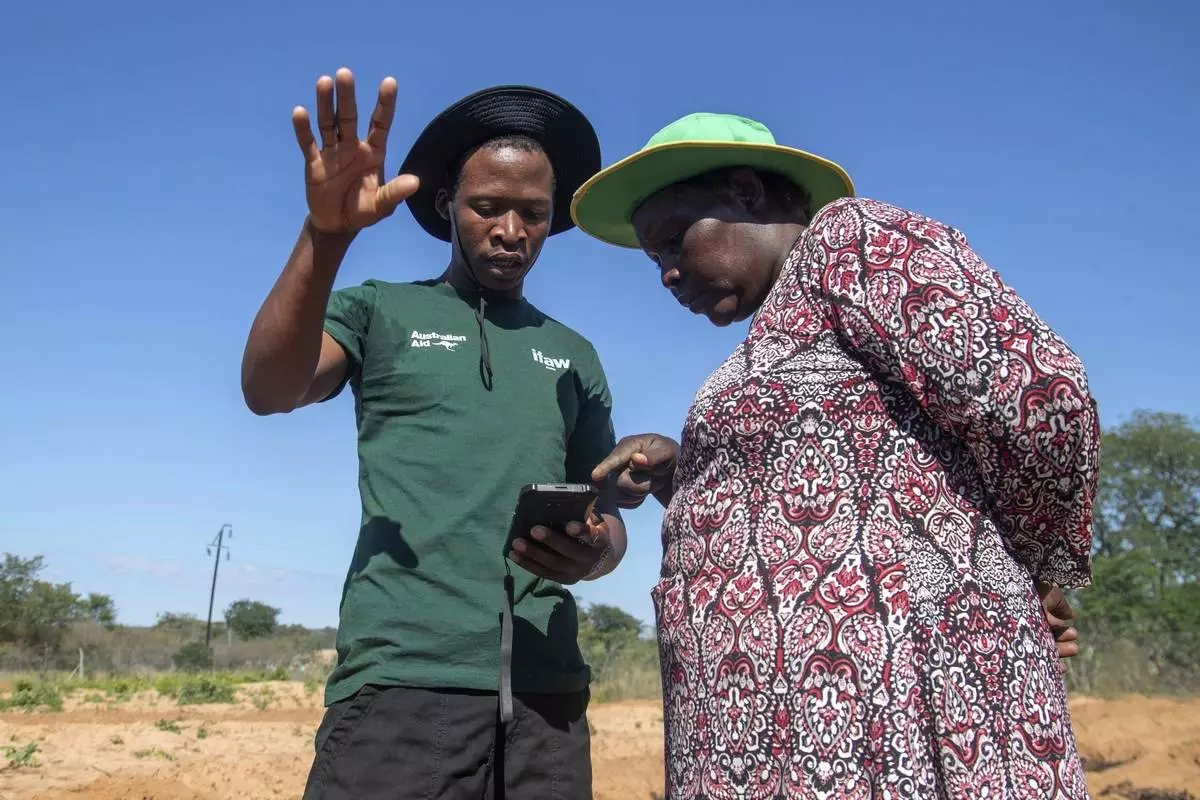
Capon Sibanda, left, a community guardian for encounters between people and elephants, talks with Senzeni Sibanda, a local councilor and farmer, in Hwange, Zimbabwe, Wednesday, April 30, 2025. (AP Photo/Aaron Ufumeli)




